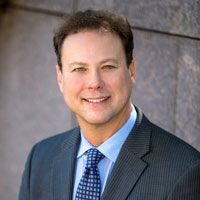From the doctor, to the pharmacist, to your mouth; prescription errors can occur at every step.
 Sometimes it starts with a doctor's messy handwriting.
Sometimes it starts with a doctor's messy handwriting.Other times it occurs when the pharmacy tech places the wrong pills in the wrong bottle. Pharmacy errors can occur at any point in the chain due to human factors (knowledge deficit, miscalculation, drug preparation error, computer information entered incorrectly, etc.). At each point, pharmacy negligence rears its ugly head. The following is a list of other types of pharmacy errors and information on recent studies of medication errors.
Compounding errors in pharmacies:
There are some pharmacies that make, or compound, certain rare medicines or prescriptions that are not widely available from major chains like Walgreens or CVS. These pharmacies are not under the same regulations by the U.S. Food and Drug Administration like other large pharmacy chains are and this can cause disastrous consequences.
In pharmacy error cases like this, pharmacy negligence can occur in several ways:
- a pharmacist mixes a medication incorrectly either by using the wrong ingredients or incorrect drug solutions;
- a pharmacy incorrectly mixes a prescription and makes it stronger than intended;
- measuring units are substituted incorrectly by a pharmacist;
- pharmacy uses inadequate monitoring and measuring techniques.
Medication Name Mix-Ups: Sound alike and look-alike drug mistakes:
-
Adderall and Inderal - Adderall is a stimulant used to treat Attention Deficit Hyperactivity Disorder; Inderal is used to treat high blood pressure.
-
Amaryl and Reminyl - Amaryl is an anti-diabetic treatment; Reminyl is an Alzheimer's medication
-
Celexa and Celebrex - Celexa is an antidepressant; Celebrex is a painkiller.
-
Lodine and Codeine - Lodine is used to treat mild pain and decrease swelling; Codeine is used to treat moderate to severe pain.
-
Flonase and Flomax - Flonase is a nasal spray; Flomax is a prostate drug.
-
Paxil and Taxol - Paxil is an antidepressant; Taxol is used to treat cancer.
Some of the most common ways similar sounding drugs or drugs with similar packaging can be mixed up include:
- misinterpretation of badly written prescription,
- mishearing prescription that is called out,
- confusing similar prescription names,
- entering a prescription incorrectly on the computer,
- pulling the wrong medicine off the shelf.
Studies on medication errors:
The number of medication error cases that are reported in the United States are just the "tip of the iceberg," according to the Institute for Safe Medication Practices. Studies have shown that the majority of pharmacy errors go unreported every year.
The goal of every pharmacy should be to follow strict quality control systems in order to prevent medication errors. Unfortunately, the reality is that mistakes happen in these systems and pharmacies administering medication are not shielded in any way by errors.
Computers miss 72% of dangerous drug-drug interactions!
A study done of 64 pharmacies by the University of Arizona College of Pharmacy found that the computer programs pharmacists used to identify possible dangerous drug-drug interactions correctly identified only 28 percent of possible dangerous interactions.
Study on prescription error causes:
A study by the office of Health and Human Services revealed how often the following factors were involved in pharmacy errors:
- too many telephone calls - 62%
- overload/unusually busy day - 59%
- too many customers - 53%
- lack of concentration - 41%
- no one available to double check - 41%
- staff shortage - 32%
- similar drug names - 29%
- no time to counsel - 29%
- illegible prescription - 26%
- misinterpreted prescription - 24%

